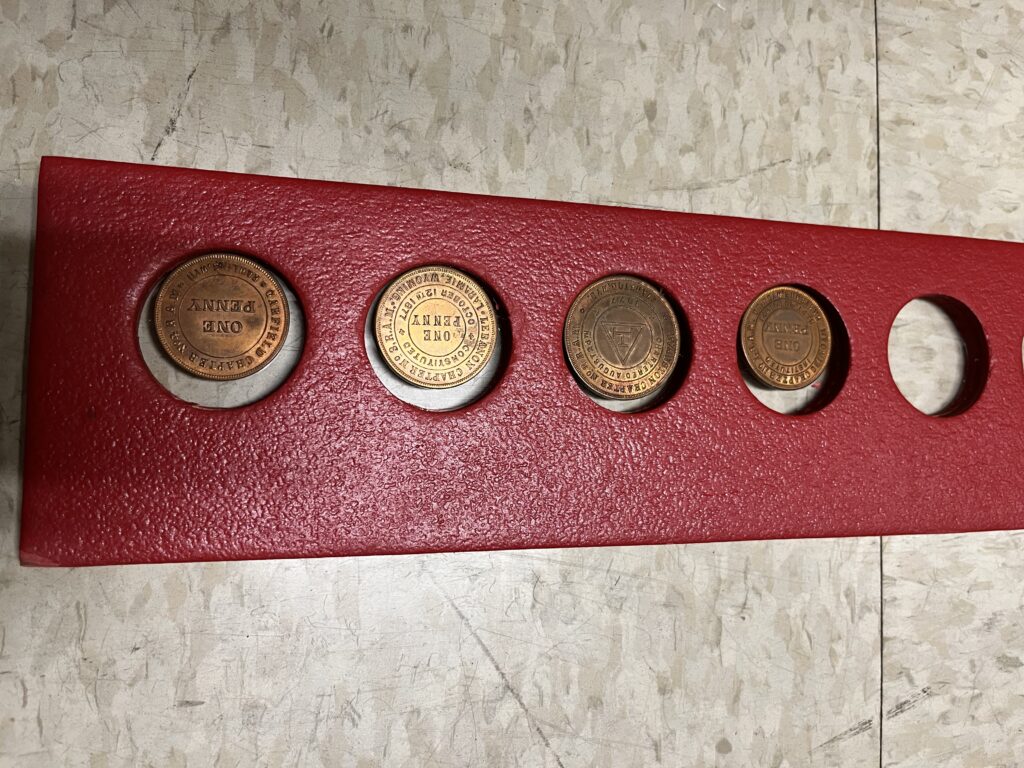In the museum’s store room, there was a massive stash of Royal Arch Mason chapter pennies which had been sitting on the shelf for decades. These chapter pennies were put together in display panels and glued or sealed within a plastic case. As the space in the Museum’s collection cage is growing scarce, the Museum staff agreed to dismantle them to free up storage space and to properly store the pennies.

We did not realize how damaged the pennies were until we removed them from the displays. While most had adhesive residues, the ones stored in plastic sleeves were covered in sticky plastic flakes and green residue. We reached out to expert coin conservators, and they helped us confirm that what was happening to the pennies was PVC damage.

It is not uncommon that some practices that were acceptable and considered “modern” in the past are now considered harmful by modern-day curatorial standards. In the numismatic world, PVC is one of the materials that is most damaging to coins, and yet it was commonly used for coin storage decades ago.
PVC, or Polyvinyl chloride, over time, can breakdown and react to metal, leaving permanent damage on the coin’s surface. As the damage takes years to develop before the consequences start to show, it was fairly recent that coin experts and collectors have been aware of PVC’s hazards on coin collections.

The experts instructed us to use acetone solvent to remove PVC from the pennies, which is also effective for removing adhesive. The pennies had been exposed to PVC and adhesive for at least 70 years, causing various degree of damage to the pennies; some were more severe than others.


Even with the PVC removed, the damage from it is irreversible. The treatment, at least, removed the PVC residues from the penny’s surface, and thus it would stop or slow down further damage. After the conservation, the chapter pennies are now properly stored in proper archival storage. Even with all the damage done, the New York chapter pennies are still a valuable collection of the Grand Lodge of New York, as the representatives of the Royal Arch Chapters across New York State.
Special Thanks to:
William Eckberg Former President of Early American Coppers (EAC)
Pippa Pearce Senior Conservator of The British Museum
References:
Tchor, Lance. “PVC Damage on World Coins – What It Is & How to Avoid It.” CoinWeek, 25 Oct. 2016.
Reiter, Ed. “Little ‘PVC’ Holders Can Cause Big Problems.” The New York Times, 25 Jan. 1981, p. 35.
